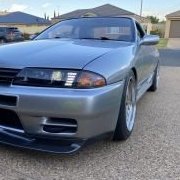Announcements
-
Similar Content
-
Latest Posts
-
To add to that very useful summary, even in the race/rally r32 gtr I have good quality, new(ish) poly bushes everywhere because that is what rules require, and the handling is excellent. Of course, the car doesn't do many klm but I'd still expect poly bushes to last better in road use than sphericals (especially as I have a couple of klm of dirt road to stuff sphericals up) I would change the front upper arms to spherical if I was allowed to, because the poly bushes flog out often, but otherwise new bushes (and ball joints) and a good alignment can make a world of difference
-
By joshuaho96 · Posted
Any chance you can get a Nistune board installed instead and set the speed limit to whatever your tires can handle? -
By GoHashiriya · Posted
Hi all, I need to get this HKS SLD attached to my stock ECU because I've now got the German autobahn and faster European circuits to contend with. The car is a manual 2dr ER34 with an AT ECU and I've realised the AT ECU has two pins for speed sensor signals: Pin 29: Vehicle speed sensor signal (Vehicle speed sensor 2) Pin *58: Output shaft rotation sensor signal (Vehicle speed sensor 1) - *RB25DET A/T model only Before I go butchering this harness, is anyone sure of which pin is the correct one for signal adjustment? The attached document from HKS indicates pin 29 but I found this situation mentioned in the following thread on a different forum (R34 GTT Auto Trans Speed Cut Problem | Zerotohundred) mentioning pin 58 needing to be altered by member zephuros, albeit it seems to be for an RSM-GP and the info appears to be old. R34_All_Workshop_Manual-pages-2.pdf R34_All_Workshop_Manual-pages-3.pdf R34_All_Workshop_Manual-pages-1.pdf HKS SLD Vehicle Pin out P59-P70 ER34-pages.pdf -
Slimline sub on the rear parcel shelf is doable. Pioneer TS-WX140DA is only 70mm high.
-
People like Johnny Dose Bro might be laughing at my post because I accidentally added 100mm to my numbers. 350-355 is indeed the lower limit. 450 is off-road Skyline spec.
-






Recommended Posts
Create an account or sign in to comment
You need to be a member in order to leave a comment
Create an account
Sign up for a new account in our community. It's easy!
Register a new accountSign in
Already have an account? Sign in here.
Sign In Now